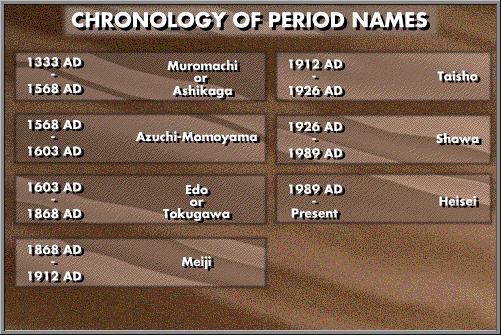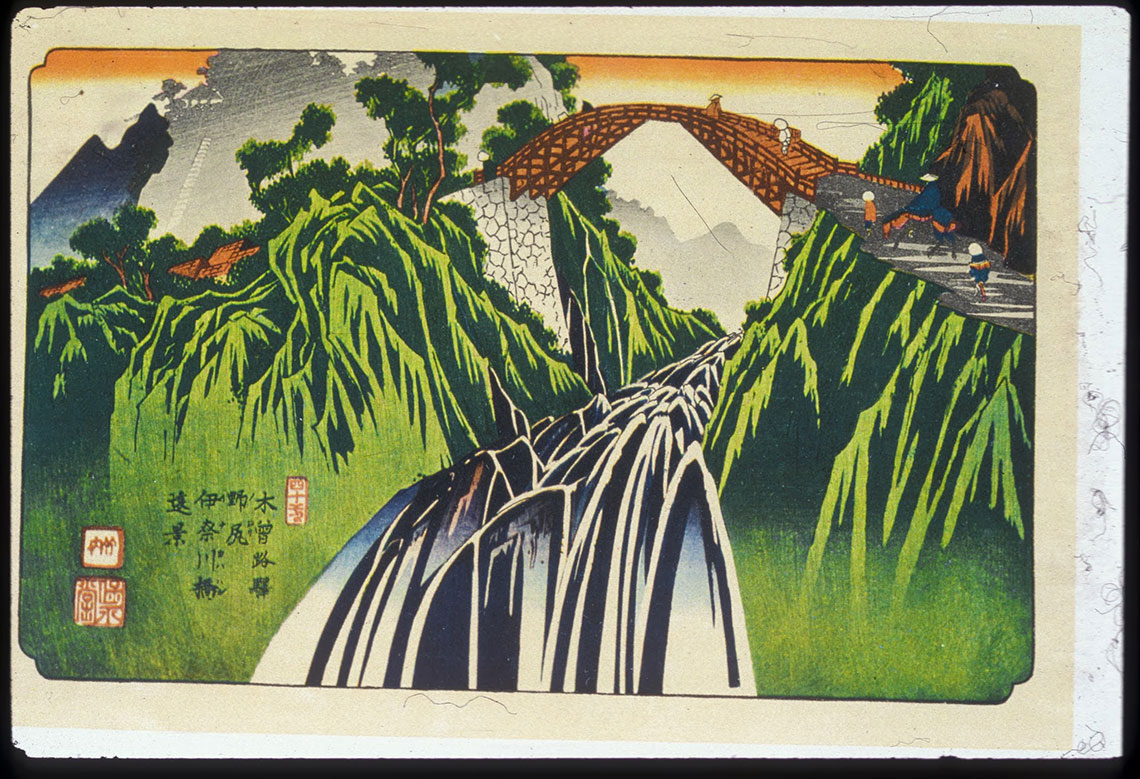Midono in 1841 had a population of 594, and 32 inns for travelers. As such it was virtually indistinguishable from neighboring Tsumago in the Edo period, but today the disappearance of so many of the old buildings means that it does not attract anything like the number of tourists that Tsumago receives.

The journey to Agematsu passes through two more post-towns: Nojiri and Suhara. This is a long trek, slightly over 16 miles, and unfortunately much of the old road is now overlain by busy modern highway. The main reason for this is that the valley is very narrow here, and the modern highway and railway line compete with the old Nakasendo, as well as with the Kiso River itself, for space. Although the roar of trains and heavy traffic is a major distraction, at least the walker can enjoy uninterrupted views across the beautiful valley. Alternatively there is a choice of walking trails that can be taken through the hills, well away from modern traffic. Both routes, one on each side of the valley, lead to Nojiri and are reasonably well signposted. Route maps can be obtained free of charge at Tsumago tourist office.
Just before reaching Nojiri, some six miles from Midono, the Nakasendo turns off from the modern highway and the walk passes quieter residential areas and, near the train station, a few old inns. Like other post-towns in this section of the Kiso valley Nojiri was a rather nondescript place in 1841, with a population of just under one thousand and only 19 inns for travelers. Nevertheless, one of these original inns is still open for custom today.
The next two miles are once again on modern highway, until a rocky outcrop which overhangs the river is reached. Today’s technology has enabled the modern road and railway line to tunnel through this, but such an option was unthinkable in the Edoperiod. The old Nakasendo takes a pleasant two mile detour around the outcrop, therefore, away from the main valley. The narrow highway winds through farmland and occasional villages until, just at the point it appears the busy modern road has to be rejoined, the next post-town of Suhara is reached.

Large ball made of cryptomeria leaves
Suhara had a population of 748 in 1841, and 24 inns. Today, it has many surviving Edo period buildings, many of them with water troughs in front for the benefit of travelers. Several are still operated as inns and the town exudes a welcoming air of traditional hospitality. Suhara has a railway station and is, therefore, prosperous without tourist traffic, but accessible to tourists at the same time.

Entrance
Leaving Suhara the road begins, once again, along the modern highway. The valley at this point is even narrower than previously, but the sight and sound of the Kiso River plunging over the rapids helps the walker forget he is competing with a constant stream of cars and trucks for space. Finally, after five miles, the old Nakasendo departs the modern highway by ascending part way up the valley side and, a little over a mile further on, the next post-town of Agematsu is reached.


